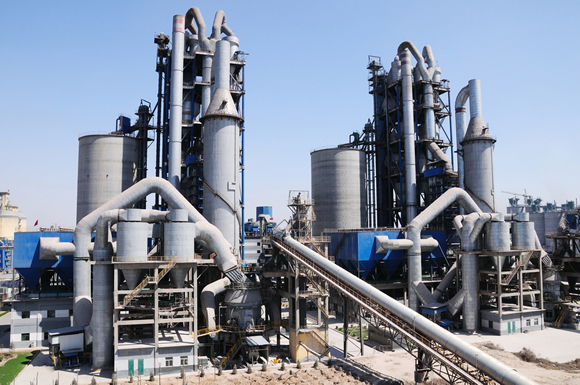History and Development of Portland Cement
Portland cement, arguably one of mankind’s most important manufactured materials, was invented and patented by Joseph Aspdin from Leeds in 1824. Aspdin produced cement by heating powdered limestone mixed with clay in a furnace, and grinding the resulting clinker to a powder. He called the product “Portland Cement” because of its resemblance, when set, to Portland stone, a type of stone quarried on the Isle of Portland. Aspdin’s cement was improved in 1843 by his son William, by vigorous heating and using better grinding equipment to handle the hard clinker. To this day, Portland cement is still the most commonly used cement around the globe.
Manufacture of Portland Cement
Cement is usually manufactured by two processes:
- Wet Process
- Dry Process
The two processes are fundamentally similar, except for the fact that in the wet process the raw materials are ground with water before they are fed into the kiln. All though there was little difference in efficiency between the two processes, the wet process had the disadvantages of CO2 emission and more fuel consumption to evaporate the water in the slurry. This made most cement manufactures prefer the dry process to wet process.
There are five stages involved in the manufacturing of cement using the dry process, which is discussed below.
- Crushing and Grinding: The raw materials like limestone and clay, obtained from the quarry, is crushed to form fine powder.
- Raw material proportioning: The crushed raw material is blended in correct proportions to form what is called the “raw feed” or “kiln feed”.
- Heating the “raw feed” in rotary kiln: The “raw feed” is introduced in the higher end of the rotary kiln by a conveyor and heated to about 1400 to 1500 degree Celsius.
- Clinker formation: The new product which is obtained from the rotary kiln is called the “clinker”. The red-hot clinker discharged from the kiln is allowed to cool and sent to the cement mill.
- Grinding the clinker with gypsum: The cement clinker is usually ground in a ball mill to form fine powder. A small amount of gypsum (5%) is used in this grinding process to control the setting properties of concrete when mixed with water. The end product of this process is called “Portland Cement”.
The cement thus produced is so fine that it almost completely passes through 0.075mm sieve. The cement is then packed and transported for various construction projects.
Variations of Portland Cement
The above method produces “general purpose” Portland cement that is used for most construction purposes. Other modified varieties of Portland cement are also manufactured in order to meet various specific construction purposes/requirements.
Sulphate-Resisting Portland Cement: The presence of heavy sulphate content in ground water causes damages such as cracking, scaling and expansion to concretes. The use of sulphate-resisting Portland cement prevents the sulphate from entering the concrete thereby enhancing its longevity.
White Portland Cement: This type of cement is intended for use in architectural purposes where white coloured concrete is desired. This differs from the grey cement primarily in colour. The white colour is attained by controlling the use of ferrite, that which gives cement its characteristic grey colour.
Rapid-Hardening Portland Cement: This is similar to ordinary Portland cement, except that its particles are more finely ground to facilitate quick reaction with water. It is used when fast strength growth of forms or structures is required.
Low Heat of Hydration Portland Cement: This type of cement develops strength at a slower rate than other cement types. This cement is used in huge concrete structures such as dams. These are produced upon specific requests for large projects.
Portland Cement in Screed
Cement as a key component of Screed: Portland cement is used as a vital ingredient for most types of floor screed. A standard cement-sand screed mix is constituted of 1 part of Portland cement and 4.5 parts of aggregates, and water. Cement acts as the binding agent that holds the aggregate together, playing a key role in the setting and hardening properties of the screed.
According to BS8204 Code of Practice, Portland Cement (CEM-I) or a composite mixture of Portland Cement of strength class 42.5 N is recommended for use in screeding applications.
In cases where cements of lower strength are used, the mix should be compensated with additional quantity of cement to achieve the expected properties and performance. For instance, in cases where cement with strength of 32.5N is used, an additional 10% of cement should be added to achieve the expected strength and performance.
Portland cement, an invaluable building material has brought about a revolution in the construction industry. Its dominance over other cements has been due to its strong nature, good hydraulic properties and the ability to carry large proportion of aggregate. Apart from this, Portland cement manufacturing has the potential to convert the industrial by-products to raw materials. Various environmental impacts such as emission of airborne pollution, release of CO2 and consumption of large quantities of fuel caused during the manufacture of Portland cement are strictly controlled by improvised technology thereby attributing to its success.








